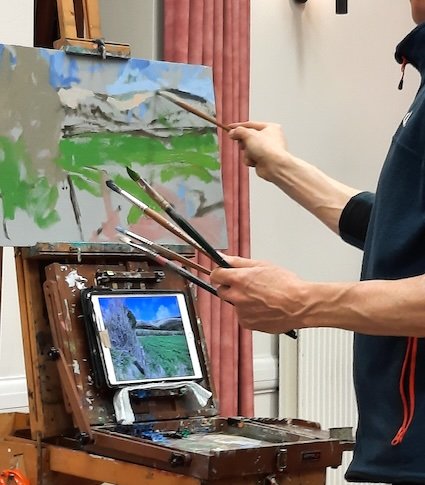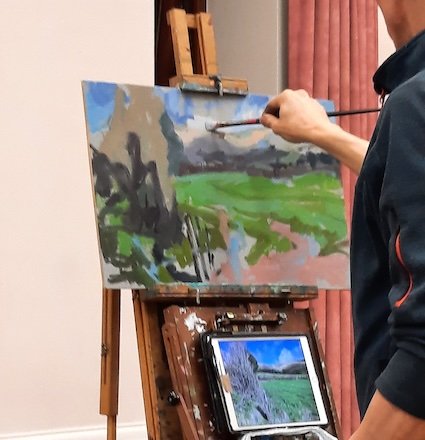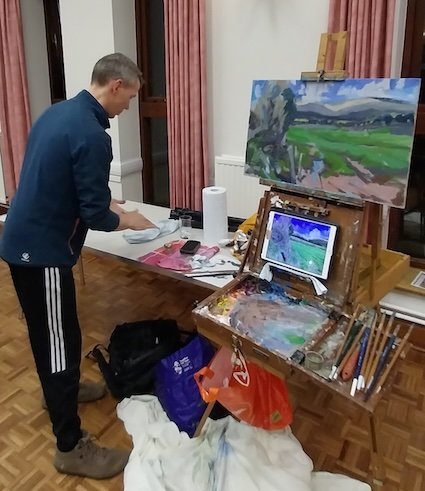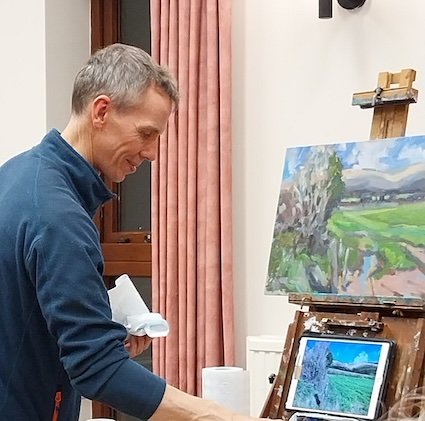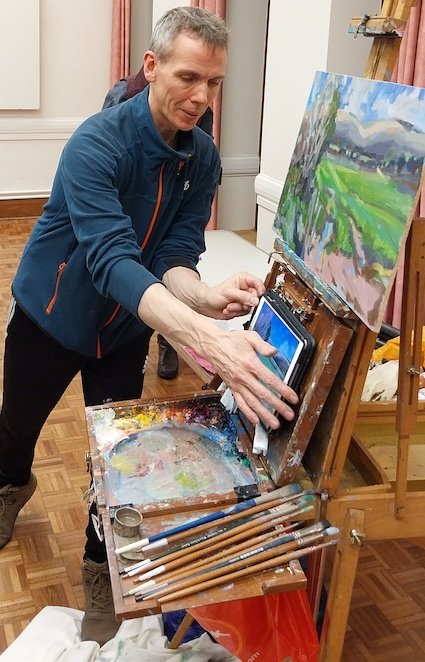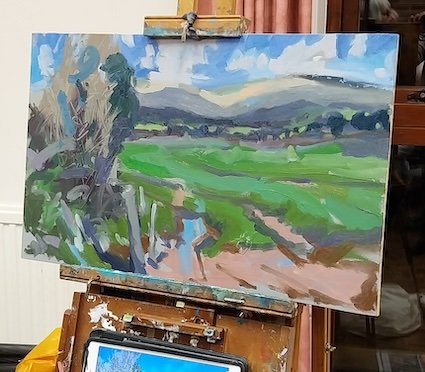Demo: Stewart Beckett - Capturing the Landscape
A very well-attended demo and members were not disappointed. It was a terrific demo. Stewart is able to paint with either hand, while keeping up a near continuous commentary and discussion with members, answering questions and offering teaching points throughout.
Working in oils, he began by placing 4 dots forming a square at the centre of the canvas to aid the initial drawing. He worked on a grey ground, sketching the main shapes in.a neutral colour. He worked from two photos of the fields near Corfe Castle - just a starting point. He explained how useful the picture editing tools were on tablets/Ipads. (Use them to either turn the saturation down to check the tones or turn it up to emphasise the colour.)
He sketched the shapes rapidly, keeping his strokes loose, working to lead the eye into the composition, maintaining the energy across the canvas. Teaching points included:
Brush strokes can be quite random to start (lots of scribbles and marks), energy is more important than accuracy.
Pink was a useful colour in the landscape to enrich the earth colours, purple was helpful to compliment the yellows of sunshine
Consider atmospheric perspective (how much air lies between you and the distance) using less saturated colours to indicate distance; strong colours in the foreground pushe the background back. Distant objects need not be too sharp about the edges - sometimes edges could be deliberately lost by placing pale colours against pale.
Measure the tone of colours carefully - put a dab on the surface if unsure. If it sinks in with the other colours around it, it works.
As you develop the scene, it helps if brush strokes follow the contours of the land
No part of the pictures is sacred - work the whole composition, keep checking that all shapes, colours work as a whole; there is nothing that can’t be changed. Keep stepping back to check.
At the front of the picture focus on stronger colours, increasing the saturation in the foreground.
When working wet on wet, wipe the brush between each stroke to avoid mud and really load the brush.
Stewart’s workshop is on Saturday, 23 March 2024, 10:00-16:00. He explained that he would be working in oils, but if people wanted to bring their own photos or sketches and work in acrylics or possibly gouache that would be fine as well. Contact Jen if you would like to join us - or book a place on the website..



